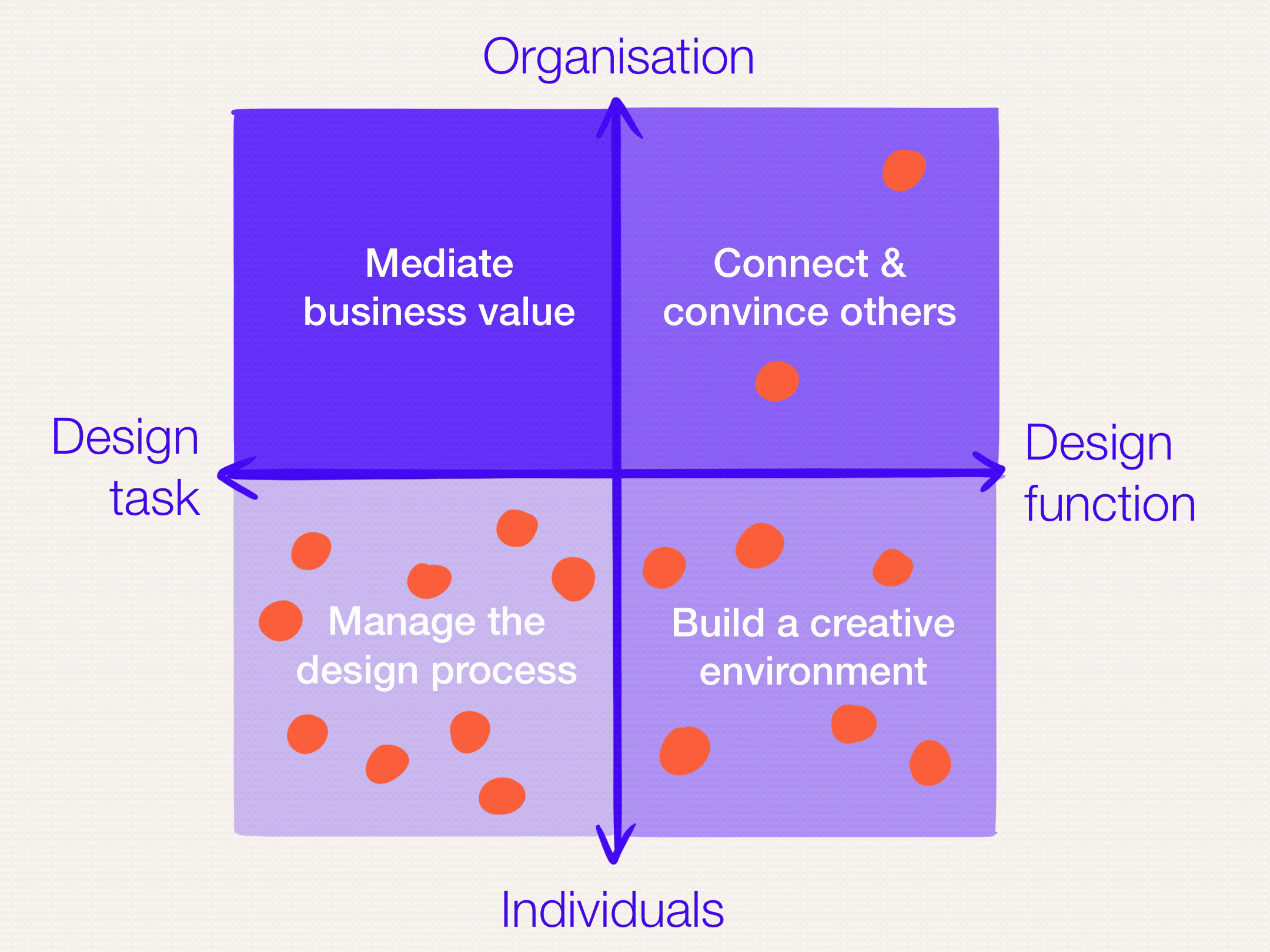Financial Services Group, 58k employees
“Help us frame and build Design Leadership capabilities in our teams across the group. Enable leaders to work more collaboratively and strategically.”
Approach
Assess current design leadership capabilities using the Design Management Competencies framework (Baars, 2016)
Articulate what success looks like
Define Design Management roles
Review existing Design Culture building rituals and compare them with external best-in-class examples
Develop a roll-out plan for Design Management roles
Prioritise actions for building Design Culture
Current vs. Future
The leadership team initially needed to understand the current state of design leadership in their organisation. The Design Management Competency framework (Baars, 2016) provided a mapping device to make sense of it. Is resulted in a visual artefact that highlighted where design leaders spent most of their time and resources, while revealing which areas did not receive adequate attention in order to build effective design teams and realise value from design.
Through discussions about what activities would lift the value generated by design, the team shifted resources and attention to create a more balanced coverage across the Design Management competency areas.
Design Management roles
The organisation had emphasised delivery roles of design – the creation of artefacts, interfaces, customer journeys, user experience etc., plus the management, tools, processes and culture. However, the mapping revealed that by doing so they lost significant value created due to the lack of engagement with the wider organisation and stakeholders.
The roles framework (Baars, 2016) is a double click into the Design Management Competencies. It articulates the skills and activities needed to succeed in all four competencies. The leadership team was able to use this roles framework to create job descriptions and revised responsibilities and expectations for design leaders in the organisation. As a result design leaders spent more time honing the skills to mediate business value and connecting cross-functionally and across hierarchies. This increased the awareness of design within the organisation and provided the design function with more reach, influence and accountability, making their efforts more valuable for the business.
Keywords: change, transformation, organisation design, design leadership, capability development







